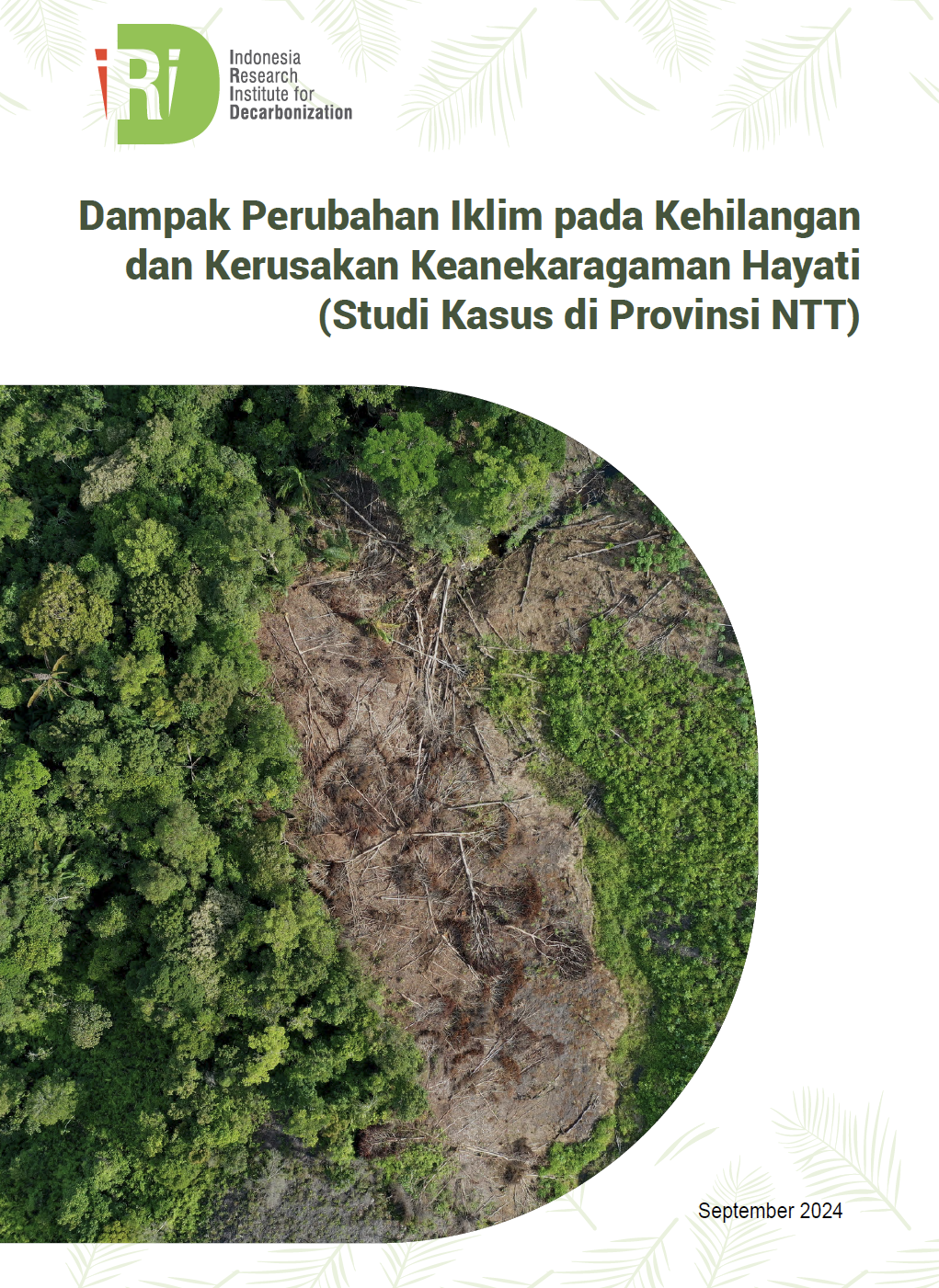Climate change has shifted from a topic of discourse to a tangible reality, with its impacts increasingly visible around the world. Rising global temperatures and more frequent extreme weather events have resulted in various impacts that some are manageable, but others lead towards irreversible losses and damages. These impacts may occur as rapid-onsets, but there are also slow-onset events which often unrecognizable, until the gradual changes due to the events becomes destructive to the ecosystems and human livelihoods, thus irreversible.
The potential losses and damages to the biodiversity in Indonesia, can increase the economy losses, particularly of those whose livelihoods are highly depending on the biodiversity. Farmers and fishermen are among others, but the losses can also be felt in other sectors such as tourism.
Climate Risk Country Profile by World Bank (2021) projects a 13%-29% decline in fisheries catch potential in Indonesia by 2050, alongside the widespread of coral bleaching that affects the livelihood of coastal communities. The model developed by the World Bank also shows that in 2100, Indonesia will experience around 25%-82% losses of its coral reefs; which further affecting the Indonesia’s tourism sector.
Recognizing the importance to identify the growing threats and possible measures to minimize it, the Indonesia Research Institute for Decarbonization (IRID), in collaboration with Yayasan PIKUL, initiated a series of discussions to map the biodiversity potential in East Nusa Tenggara (NTT), assess the risks of biodiversity loss and damage due to climate change, and identify strategies to address such impacts. The first discussion was held in Kupang, East Nusa Tenggara on September 4th 2024.
Several key findings from the discussion are the following:
A. Having Assessments on Potential Biodiversity Losses and Damages is Crucial
In the case of East Nusa Tenggara, the possible losses of biodiversity need to be further assessed using the context of archipelagic dryland as its main habitat. Several species that are critically threaten can also be identified by using the International Union for Conservation of Nature (IUCN) Red List of Threatened Species. However, direct observations remain critical to identify the main cause of species losses and damages.
Currently, biodiversity inventories in East Nusa Tenggara are limited, creating significant gaps in understanding the scale and drivers of possible biodiversity losses and damages. Existing monitoring efforts, such as survey programs and coral watch initiatives, primarily serve a reporting function without advancing deeper analysis. Thus, comprehensive data collection, long-term monitoring, and research development are urgently needed to support the evidence-based policy interventions.
B. Other Challenges in Addressing the Possible Biodiversity Dosses and damages
The role of biodiversity in the food sector is very important, particularly amid climate change. This is particularly relevant with the community access to food when extreme weather occurs. As extreme weather causes crop failures, having a rich biodiversity provides alternative food sources, enabling the communities to be food resilient in the middle of climate crisis.
In 2017, the Ministry of Energy and Mineral Resources issued a Ministerial Decree No. 2268 K/30/MEM/2017 on the Designation of Flores Island as a Geothermal Island. However, the local communities were resistant with the decision due to the potential negative impacts on agricultural productivity. The resistance was built from the lessons of Lahendong geothermal area in North Sulawesi where the communities had to shift their agriculture practices from food crops farmers to palm sugar or sap tapping farmers. This indicates that climate action policies must also consider the socio-economic aspects and include a clear transition roadmap for the affected communities.
The existing institutional challenges at the provincial level are about managing the conservation areas effectively with limited budgets, human resources, and infrastructure. These challenges are experienced by the provincial department of marine affairs and fisheries of East Nusa Tenggara.
Another challenge that is experienced by the East Nusa Tenggara province is the lack of public awareness on plastic waste management which causes marine pollution that intensifies conservation challenges. However, the authority to take legal action does not belong to the Marine and Fisheries Service. Hence, collaboration with other agencies (such as Water Police and the Navy) is required aside from engaging and involving the local communities to preserve the ocean.
Changes in the legal status of conservation areas – from nature reserves to national parks, for instance – require more robust monitoring and regulatory support. This is important to ensure that all actions to utilize forests are community-based.
C. The Role of Stakeholders to Protect and Preserve Biodiversity in East Nusa Tenggara
East Nusa Tenggara is using the biodiversity index as a strategic indicator. The biodiversity index also becomes a priority issue in the provincial development planning of East Nusa Tenggara. Nevertheless, the province has lost approximately 60,000 hectares of forest over the past decade due to deforestation and land-use change, underscoring the urgent need for stronger governance and law enforcement.
Community-based approaches are often overlooked in government’s conservation strategies. When in fact, traditional customary laws practiced by the local communities are often been more effective in promoting ecosystem protection. The Kuanfatu Village in East Nusa Tenggara, for example, has the customary law that preserves the local parrot species. It is therefore, engaging the local communities through an initiative like citizen science platforms, is crucial. The citizen science platforms can be used for biodiversity monitoring and foster ownership of conservation efforts by incorporating local knowledge system.
It is important for an intervention to an ecosystem, needs to consider the sustainability of other species within. For instance, the program to plant a thousand trees; however, the program uses a single crop species seed which results in a monoculture area. Hence, a change of mindset is then required: rather than planting a thousand single crop species in the same area, it is better to plant various species in the same area.
Notes: The full version of the discussion paper is only available in Bahasa Indonesia.
Share:




